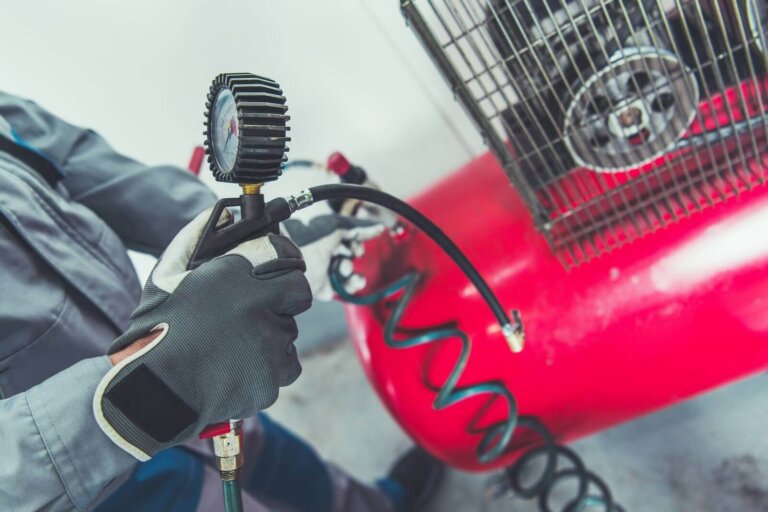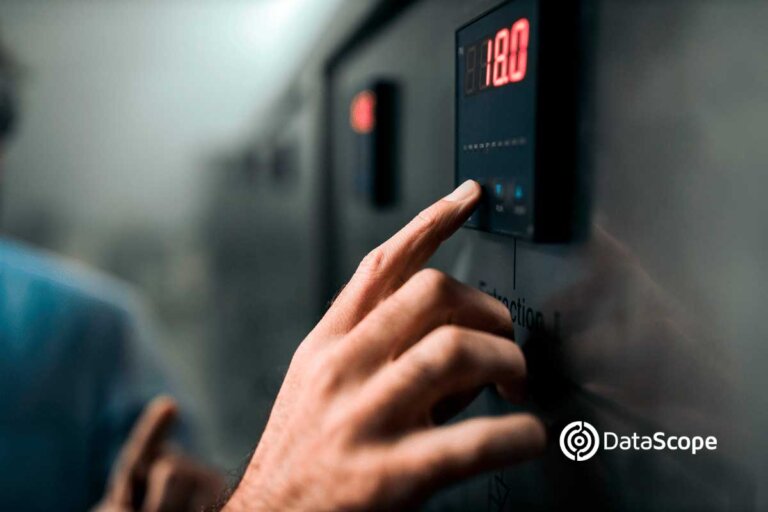Success and survival in manufacturing is becoming more difficult to ensure and it requires continuous improvements in the way we produce goods. Performance and competitiveness of manufacturing companies depend on the reliability, availability and productivity of their production facilities. To ensure that the plant gets the desired performance, maintenance managers need to careful monitor the process and output of maintenance.
What is industrial maintenance?
Industrial maintenance or plant maintenance is the application of reliable practices to increase equipment uptime. It involves functional checks, servicing, repairing or replacing of necessary devices, equipment, machinery, building infrastructure, and supporting utilities in industrial installations. Industrial maintenance include preventive maintenance, planned maintenance, periodic maintenance, predictive maintenance, and condition-based maintenance.
How to improve industrial maintenance
It is important to have an industrial maintenance strategy because all of your maintenance workflows are dependent on that strategy you use and on the maintenance software you have.
Here we have listed four practices for improving industrial maintenance. These are actionable tips to maximize the positive effects of industrial maintenance.
1) Run a proactive maintenance program
An effective industrial maintenance does not just involve fixing things that are already broken; it is also necessary to have a proactive approach to maintenance. The best place to start is to choose one (or a combination) of the following maintenance strategies:
-Preventive maintenance strategy
-Condition-based maintenance (CBM)
-Predictive maintenance (PdM)
2) Employ a mobile maintenance software
This allows you to send instant notifications to your whole maintenance team or to specific technicians. Additionally, team members can use their mobile apps to collaborate on bigger projects and exchange relevant information regarding the specific tasks they are working on. Mobile maintenance software allows maintenance staff to manage and get information from a computerized maintenance management system (CMMS) anywhere via their mobile devices.
With a CMMS you can:
-Remotely schedule and track all maintenance work.
-Keep a better control of your spare parts inventory.
-Maintain all the information in one place.
-Generate all kinds of reports you to make further improvements or cut maintenance costs.
3) Define procedures
To have a well-oiled industrial maintenance program, the workers need to not only know when to do something, but how to do it.
Maintenance procedures are essential to identify preconditions and precautions, to provide instructions for the tasks and to ensure that maintenance is performed in accordance with the main strategy. The procedures should normally be prepared in cooperation with the rest of the team. They should be technically accurate, verified, validated, authorized and periodically reviewed.
To ensure your whole team is on the same page, you should develop clear:
-Standard operating procedures (SOPs)
-Emergency operating procedures (EOPs)
-Preventive maintenance checklists
4) Measure and optimize
Feeling things are going better is not the same as knowing that things are actually better. Having goals you are trying to reach is the only way to ensure continuous improvement. Analyzing metrics, you can know the processes and procedures that are working and the ones that need improvement.
Is your current industrial maintenance strategy effective?
To improve your industrial maintenance activities, you need to define maintenance KPIs, use CMMS to track metrics and generate reports, and make the required changes in order to reach your maintenance goals.
To develop and implement an efficient industrial maintenance strategy you should improve these three productivity factors.
Use of resources
To reach your goals and maintain a lead in your market, it is vital to understand the significance of improving resource allocation and utilization rates for your specific business.
It is not enough to focus on allocating resources correctly; it is also essential to be able to measure how the resources are being used and how to make adjustments if they are necessary. The ineffective utilization of any resources can lead to dissatisfied customers, unmotivated staff or problems that could lead to the partial or complete loss of business.
Methods
When you acknowledge the resources you have for industrial maintenance, you have to improve the way you use those resources. Good resource planning will help you to identify your need and make the required changes to obtain the expected results.
Improving the resource efficiency of businesses provides enormous potential for reducing production cost and increasing productivity.
Performance
It is fundamental to improve the level of skill and effort during productive occupation. Putting skills to better use in the workplace is important for workers and companies. From the perspective of the employee, better use of skills is associated with job related well-being. On the other hand, poor use of skills creates job dissatisfaction and can be related to increased turnover.
How to develop an improvement plan?
To have an effective maintaining strategy and increase productivity you can need to develop an improvement plan that includes:
Organization
The first step is to define your business goals and plans and your startegy to achieve them in a clear and precise way. Additionally, you need to do a plan for the year, for each month, for each week and for every day. By constantly analyzing your situation, you can evaluate your position in the market and make any necessary adjustments to get back on track.
To organize your finances, use accounting and product management tools that will be very helpful to plan your stock, increase product rotation your expenses.
Preventive / Predictive Maintenance
Preventive maintenance, also referred to as planned maintenance, consists of maintenance tasks carried out while the equipment is under normal operation. The objective of this type of maintenance is to extend the life of assets, increase productivity, enhance efficiency and reduce maintenance costs.
Preventive maintenance can be more cost-effective than reactive maintenance strategies, but it can also be more difficult to justify.
Predictive maintenance is a proactive maintenance strategy that tries to predict when a piece of equipment might fail so that maintenance work can be performed just before that happens. These predictions are based on the condition of the equipment that is evaluated based on the data gathered through the use of various condition monitoring sensors and techniques. Compared to periodic maintenance, predictive maintenance manages trend values, by measuring and analyzing data about deterioration and uses a surveillance system, designed to monitor conditions through an on-line system.
• Work order system
Work order management software is a management solution that help you to create and manage service requests and work orders. It allows managers and supervisors to submit work orders directly to their maintenance team keeping everything running smoothly. All the data is sorted in a way that the managerial team can get instant insights, run reports and make informed decisions.
• Planning & scheduling system
Advanced planning and scheduling (APS) systems analyses the implications of alternative decisions, highlight consequences and issues, and generate ideal plans and schedules.
APS systems provide better information (and recommendations) on which planners and managers can base their decisions. They include tools and techniques to help manage complexity.
• Work tracking
Human ability to pay attention is about eight seconds as portrayed in statistics by The Associated Press. As the workloads continue to increase day after day, it is becoming impossible to memorize more than three tasks at the time. Task tracking software is solution to prioritize your tasks, manage your time, and meet your deadlines. It allows you to integrate and manage all tools and activities in one place.
• Management reports
They collect data from various departments of the company tracking key performance indicators (KPIs) and disclosing financial and operational information. Reporting for management provides insights on how the company is doing, empowering decision-makers to find the right methods to increase operating efficiency and take the right decisions to remain competitive. Management reports help managers monitor all the details of any department. To obtain optimal results is advisable to use management reporting software.
• Productivity monitoring
According to the WorkTime study, employees spend more than 30% of their working time on non-work related activities. Productivity tracking software is a tool used to monitor metrics affecting employee productivity. It helps to analyze employee behavior and keep track of the exact activities that employees do during their working hours.
Productivity tracking software provides customized reports that show employers how their teams work in real-time
How to monitor an improvement plan?
This plan has been implemented it has to be constantly reviewed in order to obtain the best results. By doing that you can see how you are tracking and measure the effectiveness of your initiatives.
Monitoring the plan helps to ensure that the solution has been implemented as expected
In order to monitor the plan the following questions should be asked:
-Has each step been implemented correctly?
-Has each step been implemented on time?
-Is the outcome as you planned on each step?
Based on the answers to those questions you can through the following ones:
-Is more time required?
-Are more tasks required?
-Are more resources required?
-Does the team need further training?
-What action needs to be taken?
-Does the plan need to change?
If this answer is positive you need to search for alternative plans and analyze their expected outcomes, select and implement one and monitor the progress. After that, you should generate a report indicating how you have monitored the implementation of that plan and what action needs to be taken, if any, until you get the successful strategy.






